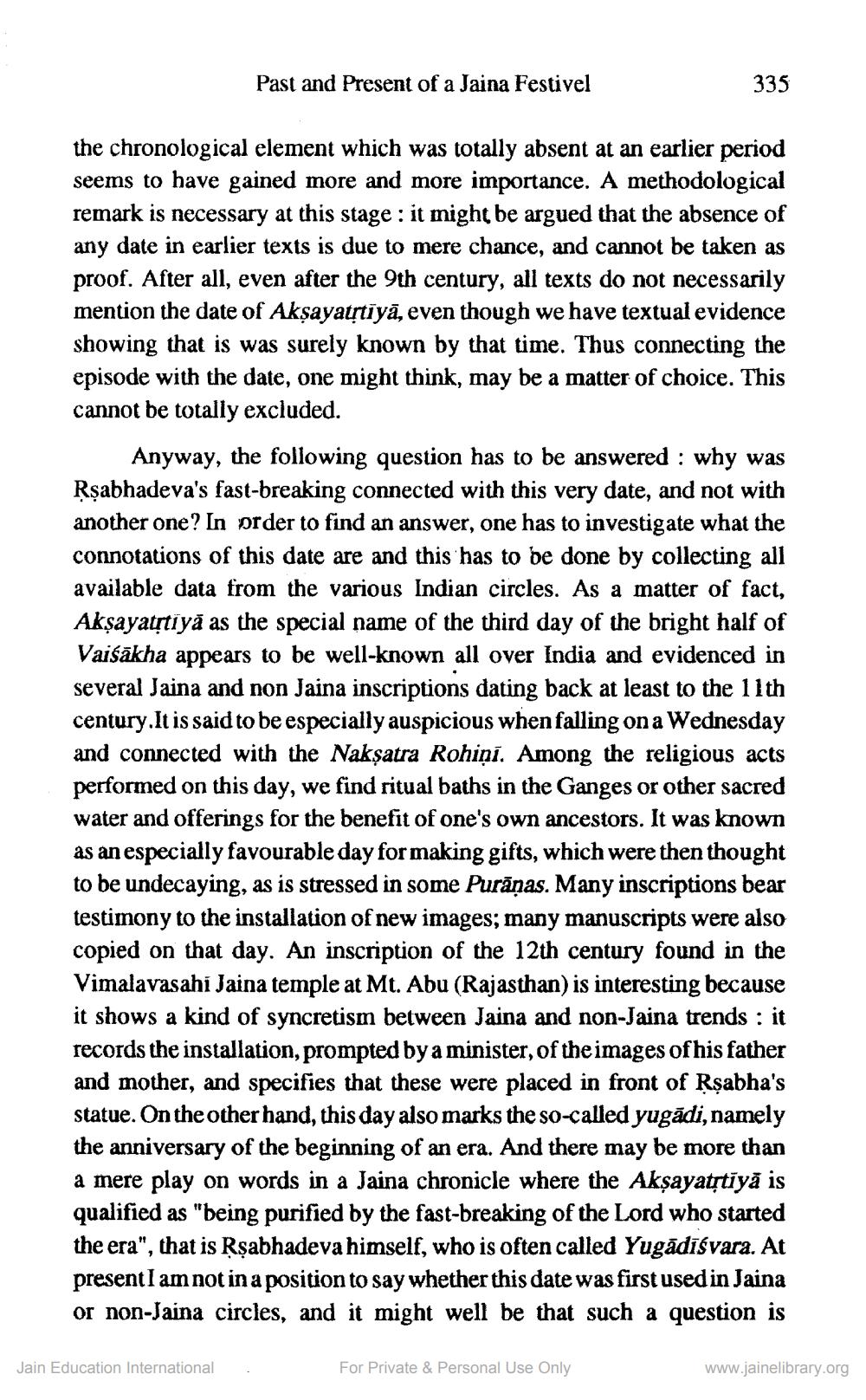________________
Past and Present of a Jaina Festivel
the chronological element which was totally absent at an earlier period seems to have gained more and more importance. A methodological remark is necessary at this stage : it might be argued that the absence of any date in earlier texts is due to mere chance, and cannot be taken as proof. After all, even after the 9th century, all texts do not necessarily mention the date of Akṣayatṛtiyā, even though we have textual evidence showing that is was surely known by that time. Thus connecting the episode with the date, one might think, may be a matter of choice. This cannot be totally excluded.
Jain Education International
335
Anyway, the following question has to be answered: why was Rṣabhadeva's fast-breaking connected with this very date, and not with another one? In order to find an answer, one has to investigate what the connotations of this date are and this has to be done by collecting all available data from the various Indian circles. As a matter of fact, Akṣayatṛtiya as the special name of the third day of the bright half of Vaisakha appears to be well-known all over India and evidenced in several Jaina and non Jaina inscriptions dating back at least to the 11th century. It is said to be especially auspicious when falling on a Wednesday and connected with the Nakṣatra Rohiņi. Among the religious acts performed on this day, we find ritual baths in the Ganges or other sacred water and offerings for the benefit of one's own ancestors. It was known as an especially favourable day for making gifts, which were then thought to be undecaying, as is stressed in some Purāņas. Many inscriptions bear testimony to the installation of new images; many manuscripts were also copied on that day. An inscription of the 12th century found in the Vimalavasahi Jaina temple at Mt. Abu (Rajasthan) is interesting because it shows a kind of syncretism between Jaina and non-Jaina trends: it records the installation, prompted by a minister, of the images of his father and mother, and specifies that these were placed in front of Rṣabha's statue. On the other hand, this day also marks the so-called yugādi, namely the anniversary of the beginning of an era. And there may be more than a mere play on words in a Jaina chronicle where the Akṣayatṛtīyā is qualified as "being purified by the fast-breaking of the Lord who started the era", that is Rṣabhadeva himself, who is often called Yugādīśvara. At present I am not in a position to say whether this date was first used in Jaina or non-Jaina circles, and it might well be that such a question is
For Private & Personal Use Only
www.jainelibrary.org




